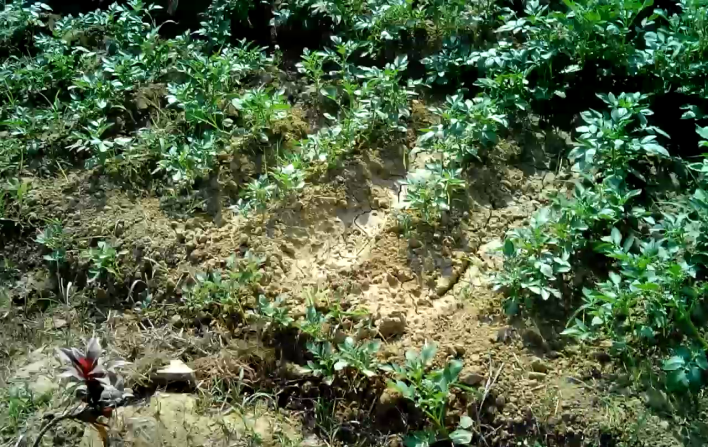| Particular | Area (lakh ha) |
| Total geographical area | 93.60 |
| Total cropped area | 79.57 |
| Net area sown | 57.25 |
| Current fallow | 4.99 |
| Forest | 6.22 |
| Barren and non cultivable Land | 4.36 |
| Land put to non agricultural uses | 16.43 |
| Cultivable waste land | 0.46 |
| Permanent Pasture (Grazing land) | 0.18 |
| Miscellaneous crops/groves | 2.37 |
| Area sown more than once | 22.32 |
Crops in Bihar
| Crop Groups | Crops |
| Cereals | Rice, Wheat, Barley, Maize |
| Pulses | Gram, Lentil, Arhar, Khesari, Peas |
| Commercial Crops | Sugarcane, Tobacco, Jute. |
| Horticultural Crops | Mango, Litchi, Bannana, Makhana, Jackfruit, Guava, Water Chestnut, Potato, Bettel leaves, Chilly. |
Vegetables
Bihar ranks 3rd in vegetable production in the country and produces a variety of traditional and non-traditional vegetables. Climatic and soil conditions of the state are congenial for production of different types of vegetables in the state. However, it lacks the basic infrastructure for storage, packaging, transportation, organized marketing system and post harvest handling facilities. Seed is the most important input which influences the output of vegetables crops. Vegetable production programmed could be strengthened only if its seed production programmed is strengthened. Thus, seed production programmed should be strengthened to give a boost to vegetable production.
Pest and Disease management in organic farming
Many organic farmers and research have substantiated that use of synthetic fertilizers and pesticides increase the crop susceptibility to pests. Plant susceptibility to insect herbivory has been shown in numerous studies to be associated with high plant N levels related to high inputs of chemical fertilizers. Free amino acids, associated with high soluble N applications, have been reported to increase pest attack. Organic crops are more tolerant and resistant to pest attack. Organic rice is reported to have thicker cell walls and lower levels of free amino acids than conventional rice.
Cultural controls are very important in organic farming. So pest control begins by making sensible choices of choosing crops that are naturally resistant to the pests and diseases or choosing optimum sowing times that prevent pest attack. Careful management of time and spacing also gives a chance for the natural predators to establish themselves and keep the pest population in check. Other methods employed are as follows-
- Improving soil health to resist soil pathogens – by recycling wastes or organic matter
- Rotation of crops to break the life-cycle of pests – crop rotations with green manure crops like
- Encourage natural biological agents and natural enemies of pests for control of diseases, insects and weeds.
- Using pheromone attractants to trap pests – light traps, delta sticky traps,[ bright yellow, light blue]
- Use of herbal products and biopesticides
Indigenous Methods for Agricultural activity
There are following points of indigenous methods for agriculture activities in Bihar:
- Crops Management Practices
- Grain Storage Practices
- Crop watch practices
- Prediction of rain
- Soil health and fertility management practices
- Livestock Management Practices
- Human Health Management Practices

Indigenous Methods for Agricultural activity
The Buxar district comes under South Bihar Old Alluvial Plains which is broadly categorized as Sub-Humid. The soil type is heavy to sandy clay. The net cultivable area is 1,40,030 ha. and 4562 ha of land for aquatic purpose. Following are some additional information about Buxar district:
- Agriculture is the predominant economic activity in the district. Other important economic activities are dairy, horticulture.
- The district is characterized by 90% rural population and basically dependent on agriculture.
- Rice, Wheat, Maize, Pulses, Oil seeds and vegetables are the major crops.
- The land is fertile. Almost 53% of the cultivable area is irrigated through various sources. Around 70% of the cultivable land is cultivated more than once.
- Buxar is considered as rice-bowl in the State and Rice mill is a traditional industry.
- The crop coverage varies significantly with the variation in the rainfall. The cultivation of potato and green vegetables is significant.
- The agriculture of the district is still based on rice-wheat cycle. Cultivation of sugarcane is still negligible but agronomic conditions are suitable for its cultivation.
- The use of HYV Seeds and seed rotation is very limited, which makes it necessary to promote seed production. The use of fertilizers is low as well as imbalanced.
- Buxar district is also drought prone district where annual rainfall is gradually decreasing.
Click on below buttons and Download PDF files for more details in this context.